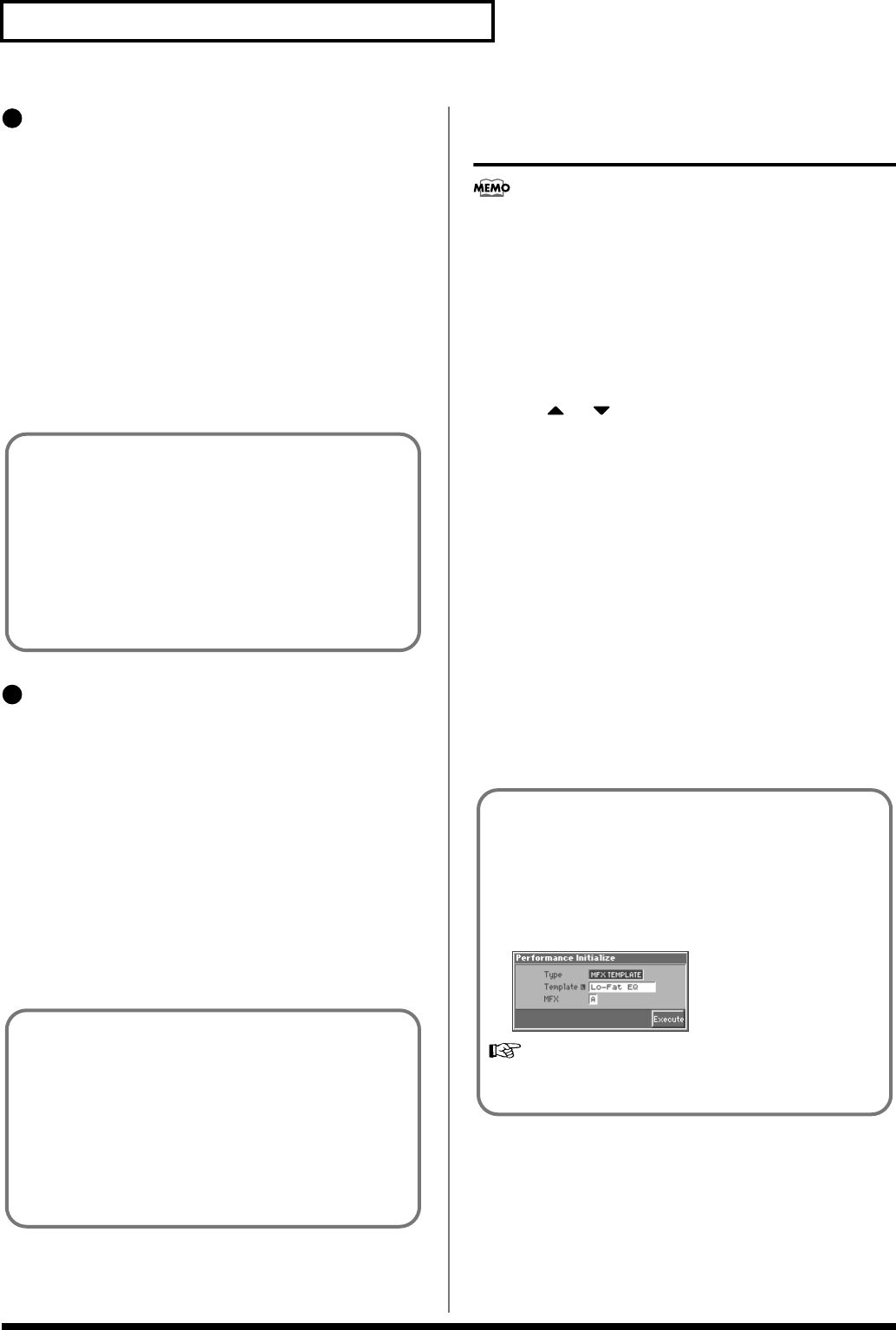
174
Adding Effects
Chorus Source
● When a performance is selected
Selects the chorus parameter settings that will be used by the
performance. If you wish to use the performance settings, select
“PRF.” If you wish to use the settings of the patch/rhythm set
assigned to one of the parts, select the part number.
Value: PRF, P1–P16
● When a multitimbre is selected
Selects the chorus parameter settings that will be used by the
multitimbre. If you wish to use the multitimbre settings, select
“MLT.” If you wish to use the settings of the patch/rhythm set
assigned to one of the parts, select the part number.
Value: MLT, P1–P16
Reverb Source
● When a performance is selected
Selects the reverb parameter settings that will be used by the
performance. If you wish to use the performance settings, select
“PRF.” If you wish to use the settings of the patch/rhythm set
assigned to one of the parts, select the part number.
Value: PRF, P1–P16
● When a multitimbre is selected
Selects the reverb parameter settings that will be used by the
multitimbre. If you wish to use the multitimbre settings, select
“MLT.” If you wish to use the settings of the patch/rhythm set
assigned to one of the parts, select the part number.
Value: MLT, P1–P16
Making Multi-Effects Settings
(MFX/MFX Control)
Here we will explain how to make multi-effects settings in
Performance mode. The procedure is the same when making
settings in Patch mode or Multitimbre mode.
Setting Procedure
1. Select the sound to which you want to apply the multi-
effects (p. 85).
2. Press [MENU] to access the Menu window.
3. Press or to select a “Performance Edit,” and then
press [8 (Select)].
The Performance Edit screen appears.
4. Press [1 (▲)] or [2 (▼)] to select the “MFX” tab or the “MFX
Control” tab.
The multi-effects parameter setting screen appears.
5. Use [CURSOR] to move the cursor to the parameter you
wish to modify.
6. Turn the VALUE dial or press [INC]/[DEC] to get the value
you want.
7. Repeat steps 5–6 to make the multi-effects settings.
8. If you wish to save the changes you’ve made, press [6
(Write)] to perform the Save operation (p. 93). If you do not
wish to save changes, press [EXIT] to return to the previous
screen.
20
When Patch or Rhythm Set Settings Are
Selected
When the patch or rhythm set’s chorus settings are selected,
those settings are shown in each of the multitimbre’s/
performance’s chorus setting screens, and the settings can be
then be changed as well. Changes to patch or rhythm set chorus
parameter settings are lost when another patch or rhythm set is
selected. To keep the modified settings, save the patch/rhythm
set settings (p. 93, p. 114).
21
When Patch or Rhythm Set Settings Are
Selected
When the patch or rhythm set’s reverb settings are selected,
those settings are shown in each of the multitimbre’s/
performance’s reverb setting screens, and the settings can be
then be changed as well. Changes to patch or rhythm set reverb
parameter settings are lost when another patch or rhythm set is
selected. To keep the modified settings, save the patch/rhythm
set settings (p. 93, p. 114).
MFX Template
The Fantom provides a variety of multi-effect settings in the
form of MFX templates. Simply by pressing [7 (Init)] and
selecting an MFX template, you can summon up just the right
effects settings for the application you have in mind (p. 43, p. 69,
p. 91, p. 112)
fig.14-06a_50
For more information about MFX template, refer to “MFX
Template List” (Sound/Parameter List).
